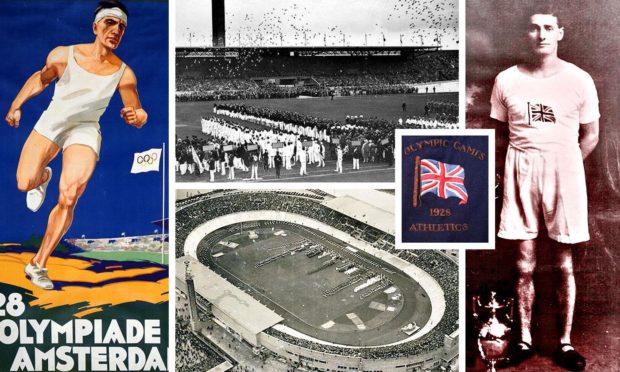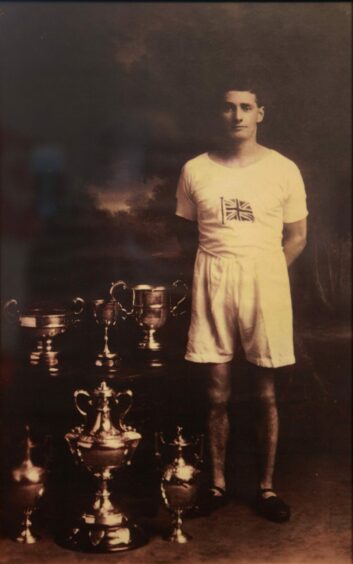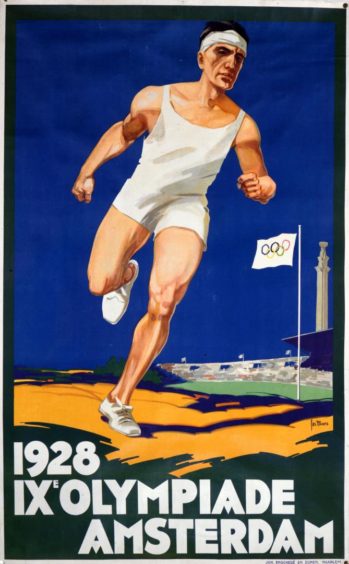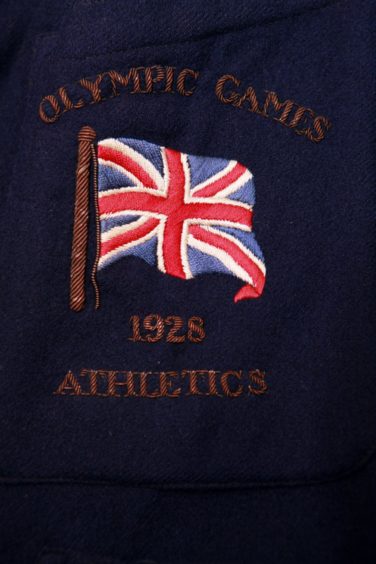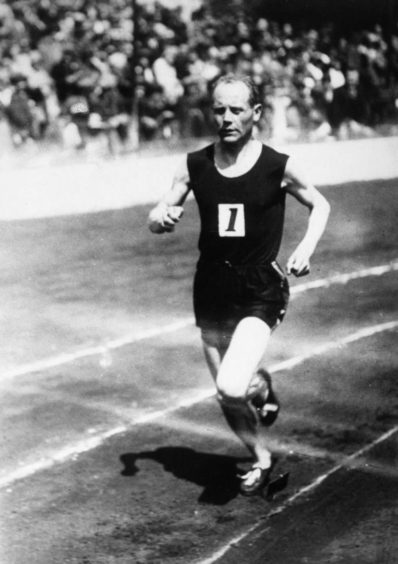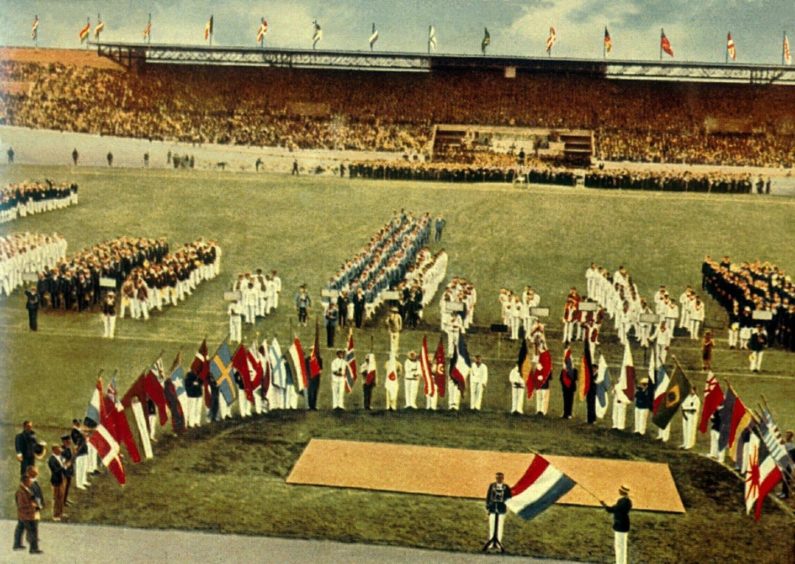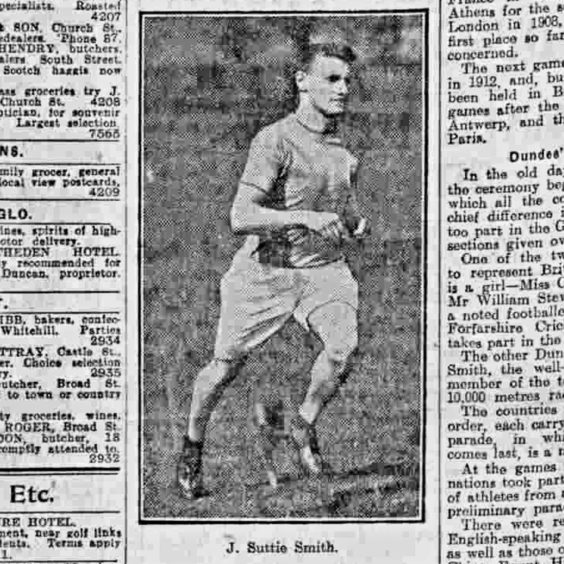Dundonian John Suttie Smith prepared for a tilt at Olympic glory by running up and down four flights of stairs in a Hilltown tenement.
Smith, a self-coached long-distance runner, had no hi-tech equipment in these days, and was a carpet weaver at Tay Works who ran in his spare time.
He represented Team GB in the 10,000m at the 1928 Olympics in Amsterdam, finishing 10th after he stopped, thinking the race was over, with a lap to go.
Who was Suttie Smith
Born in 1905, Smith was a first-rate gymnast along with his brother Arthur.
He won the district juvenile and junior championships, the Dickie Cup for the best rope climber and was a member of the team which won the Scottish Gymnastic Shield.
In 1925 he competed in the Invergowrie Sports where his successes in the 880 yards and mile races led to him being asked to join Dundee Thistle Harriers.
Smith was an immediate success and in his first year with the Thistle he came second in the Eastern District Cross-Country Championship.
He won the Eastern District title the following year and continued his meteoric rise by winning the Scottish Track Championship over four miles in 1927.
He won silver at the International Cross Country Union World Championship in 1928 at Ayr Racecourse.
The Courier reported: “Smith, who has now won all the honours obtainable in Scotland, is a certainty to represent Great Britain at the Olympics.
“Smith is by no means a big fellow, but he has a raking stride, and an amazing amount of reserve force that he can call upon for that final burst that means all the difference between success and failure.
“This is his second appearance in an international team.
“Last year he finished 18th, this year second.
“And he is not yet 24!
“Smith is modesty personified, and simply cannot be got to talk about himself.
“He has come to the front with remarkable rapidity.”
Olympic Games in 1928
Strangely enough it was not until 1928 that Smith managed to win his own club championship which always seemed to be his bogey race.
Smith went on to become one of two Dundee athletes chosen to represent Team GB at the Amsterdam Games alongside teenage swimmer Cissie Stewart.
He was selected for the 10,000 metres.
When it came to training for the Olympics, his routine depended on the weather.
He didn’t get any special coaching.
When it was dry, he ran in the country or on a local track.
When it rained, he ran up and down the stairs in the Hilltown tenement where he lived.
All his training took place after work, at weekends, or on rare days off.
Smith lined up alongside Flying Finns Paavo Nurmi, Ville Ritola and their great Swedish rival Edvin Wide in the Olympic Stadium in Amsterdam on July 29 1928.
There were no heats.
All 20 participants went straight to the final, which was the day after the opening ceremony, where the Olympic flame made its first appearance of the modern age.
In the early stages, the USA’s Joie Ray was setting the pace at the front.
After 1,500m, Ritola accelerated into the lead, with Nurmi and Wide behind him.
At the half-way stage, the three runners were more than 100m ahead of the chasing pack.
After 6.5km, Wide fell back, leaving the two Flying Finns to battle it out for victory.
As they approached the home stretch, Nurmi made his move from the outside lane and crossed the finish line in a time of 30:18.8.
It was Nurmi’s ninth Olympic gold medal, a record in athletics that would not be equalled until 1996, by the USA’s Carl Lewis.
Smith finished 10th although his real prowess was over a longer distance.
Ten miles was his best, not the six and a bit which that 10,000m amounts to, although Smith explained he might have secured a better place following a mistake.
Smith’s British team-mate Wally Beavers finished ahead of him, in ninth, but, in the end, it came down to a mere two hundredths of a second.
He returned to Tay Bridge Station in Dundee on August 7 and explained that he thought the race was over when there was still a lap to go.
He stopped and lost a second or two, allowing Beavers to pass him.
Empire Games withdrawal
Smith was certain of a place in the Scotland squad for the 1930 Empire Games in Canada before he broke down a month before the competition.
The Courier reported: “Suttie Smith, the popular Dundee Thistle Harrier, has been advised to give up racing for the remainder of the season.
“This decision, reached last night, will deprive Smith of several opportunities in the coming weeks and will keep him out of the Scottish team for the Empire Games in Canada next month.
“The sympathies of all who are interested in pedestrianism will go out to Smith in his misfortune.
“He took part in the Lochwinnoch meeting on Saturday last, figuring as virtual scratch man (15 yards) in the invitation two-mile handicap, and he ran a great race, finishing fourth in the fine time of nine minutes, 43 seconds on the grass.
“Immediately he stopped running, however it was apparent that something serious had happened to his legs, as he had great difficulty in getting off the track.
“He is to undergo treatment with an expert masseur, whose report should prove interesting, as the local champion is at a loss to explain his collapse, as he contends he has not had any particularly hard races lately.
“Smith was practically certain of his place in the team to represent Scotland in the premier meeting of the British Empire Games, to be held in Hamilton, Ontario, Canada, this year, and it is extremely unfortunate that he should be compelled to forego the honour of representing his country.
“His many friends will wish him a speedy and complete recovery.”
Record was undefeated for 24 years
Smith was one of Scotland’s outstanding distance runners and raised the bar to a new level by winning five consecutive title races between 1928 and 1932.
In addition to winning the cross country championship five times, he won the Scottish 10 miles track championship four times and the four mile championship three times.
Smith’s record of 51:37.8 set in 1929 over 10 miles remained undefeated for 24 years until Ian Binnie broke it with a time of 50:11.0 at Dunoon in 1953.
He also won the Scottish YMCA cross-country title for seven consecutive years.
He died in 1975 but his sporting genes were passed down the generations.
